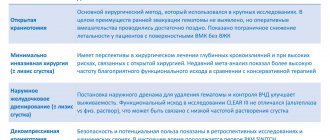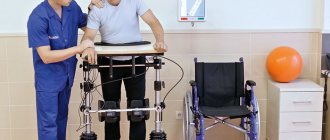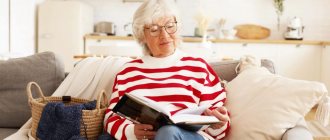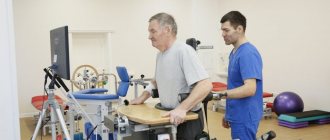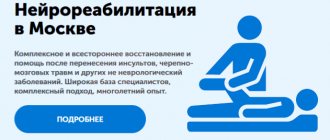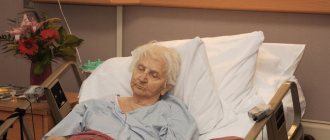Benefits of using stroke rehabilitation products
Patients' recovery is carried out according to an individually designed comprehensive program. Simulators are an important component of comprehensive work that helps:
- Normalize blood circulation . When you exercise, your brain receives an increased amount of oxygen. Thanks to this, blood circulation improves, metabolic processes are normalized, and tissues receive enough nutrients. As a result, the nerve centers of motor activity restore normal functioning.
- Improve muscle tone . After a stroke, hypertonicity is observed in the muscles, due to which they cannot work fully. Rehabilitation exercise equipment for recovery after a stroke helps stabilize coordination and make movements painless and controlled.
- Restore the relationship between the brain and muscle systems . The simulators specifically load the muscles and change the load point, regulate the motor amplitude and stimulate muscle contractions. Thanks to this, the connection between the brain and muscles is restored.
- Take back control of your body and get rid of the feeling of helplessness . As motor abilities are restored, a person will no longer feel helpless, and a normal psychological state and positive attitude, which are so important for a full recovery, will return to him.
Therapeutic effect of DIAMAG
The mechanism of action of a low-frequency, low-intensity pulsed magnetic field is to improve cerebral circulation, which allows you to restore the flow of oxygen to damaged brain tissue, as well as deliver more medications to them.
The magnetic field is a catalyst for metabolic efficiency. The influx of blood allows more nutrients to be delivered to the affected area, and it is better to organize the outflow and removal of waste products from brain cells. DIAMAG is able to lower blood pressure, which greatly reduces the likelihood of relapse. By accelerating capillary flow and increasing the lumen of blood vessels, the patient’s likelihood of having a recurrent stroke decreases and brain and motor functions are better restored.
Under the influence of a magnetic field, the pineal gland produces the hormone melatonin in the blood, which helps protect against stress. That is why, when using DIAMAG, patients experience improved sleep quality, decreased fear of death and a feeling of anxiety, which is important for the recovery process and relationships with family members.
Types of simulators and equipment for rehabilitation after stroke
Exercise machines that can be used both at home and in a hospital or rehabilitation center help speed up rehabilitation after a stroke. Let's take a closer look at the most popular types and categories of such devices.
Exercise bikes
A device with pedals that simulates riding a bicycle. Most effective for restoring the functioning of the muscles of the legs, back and even arms. The number of muscle systems involved depends on the model of the device.
The exercise bike is suitable for rehabilitation after a stroke even for those patients who cannot sit or stand without support. To start the lesson, you just need to sit the person on the exercise machine, fix your feet on the pedals and turn them with your own hands instead of the patient. There are also more advanced models with an electric motor that pedal independently by moving the attached legs or even arms. This device is controlled using a remote control.
When the muscular system is restored, the patient will be able to move from forced pedaling to independent pedaling. At the same time, a bicycle for rehabilitation after a stroke allows you to control the resistance force of the pedals, the frequency of rotation and the intensity of exercise.
Regular exercise on an exercise bike brings results after about a month. A person coordinates movements better, learns to maintain the body in an upright position, and begins to move his limbs even with an initial lack of control over them.
Arm trainers
Special simulators for hand rehabilitation, which train fingers and hands, help to get rid of muscle atrophy and improve neuromuscular transmission after a stroke.
The most effective device for hand rehabilitation after a stroke is considered to be a robotic glove. It works based on sensors and can be controlled through a computer program. In the glove, you can set the load level and operating mode, thanks to which the device adapts to the individual needs of a person, taking into account the degree of damage to the neuromuscular junction.
Working with simpler hand tools also brings positive results: expanders, rubber rings and balls, dumbbells, bodyboards and even simple plasticine. They restore fine motor skills, use the muscles responsible for extending the fingers and palms, and develop the hands.
Leg exercisers
In addition to the exercise bike, other devices will help restore leg mobility:
- Walkers . Rehabilitation walkers help people after a stroke maintain stability when walking and relieve the fear of losing balance and coordination.
- Treadmill . For rehabilitation after a stroke, the treadmill must have safety rails. There is no need to run on it - just start walking slowly, increasing the pace over time.
- Stepper . Simulates climbing stairs and gives a complex load on the entire body. Suitable for people who already walk confidently and are looking to improve their skills.
Devices for muscle electromyostimulation
Electromyostimulation is a method of restoring the functioning of muscles and nerves, which is based on their electrical stimulation. The approach is used when working with paralysis and paresis.
A special device transmits current with customizable characteristics from the stimulator to the patient’s body through electrodes. When working with the hands, electrodes are placed on the forearm, where the ulnar, radial and median nerves pass. To stimulate the legs, electrodes are fixed in the area of the greater tibial and lesser tibial nerves. After this, pulses are transmitted at a current strength of no more than 5 mA.
The duration of the procedure is 5-9 minutes. With daily sessions, the course lasts about 10-14 days.
Equipment for home and rehabilitation centers
Depending on the capabilities of independent operation and installation location, rehabilitation simulators are divided into two categories:
- For home use . The devices are small in size and have a simple design. They are easy to use independently without medical supervision.
- For use in rehabilitation centers . More complex devices that are distinguished by large dimensions and a complex system of use. It is quite problematic to place such devices at home, but within a rehabilitation medical facility they help patients quickly achieve positive dynamics.
Equipment for bedridden or limited mobility patients
Special devices are needed to make it easier to take medications and feed, perform hygiene procedures, change bed linen, and also make at least minimal exercise and position changes possible.
The lift helps to lift an immobilized person from the bed and move him to a stroller, bath, toilet or other necessary place. The device can be used both at home and in a medical facility. Lifts can be mobile or stationary. The former help to move the patient in space without using a wheelchair, and the latter only help to lift an immobilized person from the bed for further placement in a wheelchair or vice versa.
A rope ladder is another effective device for independently lifting a lying patient out of bed. A person simply grabs the wooden poles with his hands and gradually pulls his body into a sitting or standing position. The staircase allows you to climb without the help of others, trains your arms and body, and also helps get rid of the feeling of helplessness.
Anti-bedsore mattresses and pillows help prevent bedsores. They redistribute loads, stimulate blood circulation and normalize air circulation in areas of contact between the body and the bed. Such mattresses and pillows are selected taking into account the patient’s weight and the degree of his physical activity.
Rapael
Neofest has developed a “smart” glove called Rapael, designed to restore the capabilities of a stroke-affected hand. This glove, which is used as a control mechanism in physical therapy games, works in conjunction with an Android tablet.
It is worn on the user's affected hand and uses motion and positioning sensors on the fingers and wrist to control it. The application, to which the device is connected via Bluetooth, “guides” the patient through a series of game and active scenes that allow you to train the muscles of the arm or hand.
The gloves are available for both hands and in different sizes, even for children. People can rent the smart glove and an Android tablet with the app for $99 a month. Perhaps this distribution method is the most convenient for consumers, since, as a rule, rehabilitation takes no more than a few months.
Products for the care of stroke patients
Additional tools will help facilitate the care of stroke patients who are bedridden or have limited mobility:
- crutches – facilitate the movement of a sedentary person, help to gain support and restore walking skills;
- rehabilitation suit - special clothing that maintains the correct position of the body and limbs, stimulates the transmission of impulses from the brain to the muscles, and enhances the reaction of the motor-neural system;
- bandage-fixator - a fixation bandage that holds the paralyzed arm in a half-bent position, while controlling its position and preventing injuries;
- toilet chair - a portable toilet with a removable container for excrement;
- seat, bath rails - items that are fixed to the bath to facilitate water procedures;
- additional hygiene products : adult diapers, absorbent linens, diapers and sheets, body cleansers and moisturizers, etc.
When and how to start recovery
Doctors recommend starting rehabilitation immediately after the patient’s condition has stabilized. While still in the intensive care unit, it is necessary to lift the patient and conduct passive rehabilitation exercises.
The most “responsive” recovery period, during which the maximum effect can be achieved, is the first six months after the attack. The period from six months to two years is considered the late recovery stage. When two years pass after a stroke, the patient’s condition will not change significantly.
A physical rehabilitation plan should be developed by a physical therapist. The specialist assesses the degree of loss of motor functions and decides what kind of rehabilitation will help reduce muscle tone, reduce pain, and restore the ability to move independently. He also selects technical means and devices that will make rehabilitation after a stroke as effective as possible at home or in a hospital.
As a rule, rehabilitation begins with light gymnastics and massages. In the first days, you should not subject the body to intense stress. From 8-10 days after a stroke, rehabilitation begins with the help of universal simulators in a hospital setting. After two weeks, you can start training at home according to your doctor’s recommendations. The main thing is to maintain regularity and gradually increase the complexity of the exercises in consultation with a physiotherapist or rehabilitation specialist.
Alternative Recovery Options
A comprehensive recovery system includes not only work on simulators, but also other rehabilitation methods. To do this, you need to add to the program:
- General exercises to strengthen physical fitness . Light gymnastics, exercises with a Swedish wall, work on the horizontal bar or uneven bars. Even the simplest exercises will bring results: squats supported by handrails, deviations from the crossbar, etc.
- Working on fine motor skills . A person can simply handle small objects, tie shoelaces, fasten and unbutton buttons.
- Favorite hobbies . Reading, drawing, handicrafts - depending on the patient’s capabilities and the degree of damage to motor functions.
- Massage . It is recommended to introduce it as early as possible. The program consists of 20-30 sessions, which are carried out daily or every two days. After this, they take a break for about two months and repeat the course.
- Proper nutrition . The diet must be prescribed by a doctor. It is extremely important that the body receives from food the vitamins, microelements, and nutrients necessary for recovery.
- Communication with other people, walks . Communication with other people helps stabilize the psychological state and promotes recovery.
Rehabilitation after a stroke is a long and complex process that requires patience and effort from both the patient and his loved ones. At the same time, months of intensive work are sure to bring results and help a person return to normal life and motor freedom.
Where to buy exercise equipment and equipment for rehabilitation after a stroke
Exercise machines for rehabilitation after a stroke at home should be purchased only in specialized stores. Devices must have certificates and be accompanied by detailed operating instructions that will help you use the device correctly.
You can select suitable technical means of rehabilitation in the Comfer catalog in the section “Supports for movement”. Our store offers products for the care of bedridden and immobile patients, mobility supports and other aids that are necessary during the recovery period.
Products for rehabilitation after a stroke will make recovery faster and more effective, and hygiene products and supports will greatly facilitate the care of sedentary and bedridden patients.
To place an order, call us at the phone number listed on the website, or request a call back. Our consultants will not only place your order, but will also help you choose suitable hygiene products, devices and exercise equipment. All materials posted on the site are for informational purposes only and cannot be used as medical advice. To make a diagnosis and choose treatment methods, consult your doctor.
Neuromuscular exoskeleton
A new robotic orthosis (a device needed to offload and support painful, injured joints or limbs), developed by specialists from the Hong Kong Polytechnic University and called a “neuromuscular exoskeleton,” combines soft robotics and neuromuscular electrical stimulation technologies. It contains electromyographic2 sensors that detect when the user attempts to engage an injured muscle and immediately activates stimulation to cause those muscles to move in conjunction with the robotic elements of the orthosis.
The system uses soft robotic technology, making the device lightweight and easy to use. The component, which is mounted on the upper arm, weighs only about 300 g and does not consume much electricity, which it receives from the built-in battery. This battery can last up to 4 hours straight.
The combination of precisely timed stimulation with mechanical support of the hand helps the brain learn to associate various movements with the patient's intentions, thus significantly accelerating the process of neuroplasticity, which is very important for proper recovery.
According to the developers, this device will allow stroke patients to carry out most of the rehabilitation process at home, thereby saving them significant money.
